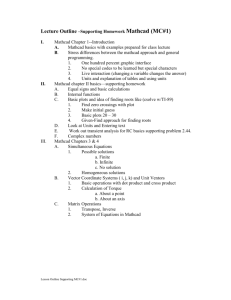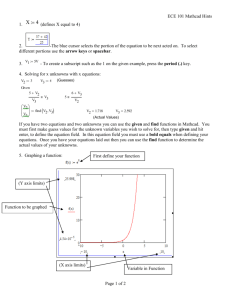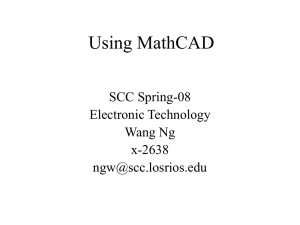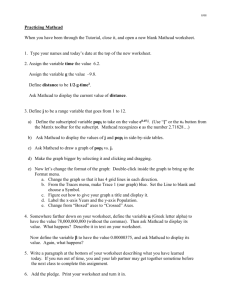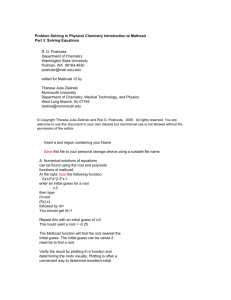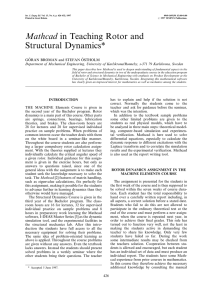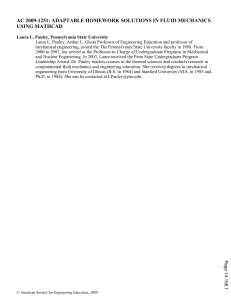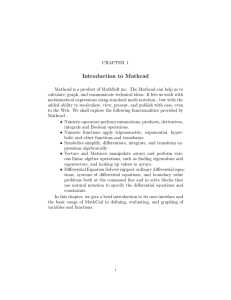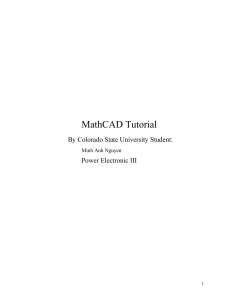@Risk and Matchad interact to solve the Dillen,Koen;Demont,Matty and Tollens,Eric
advertisement
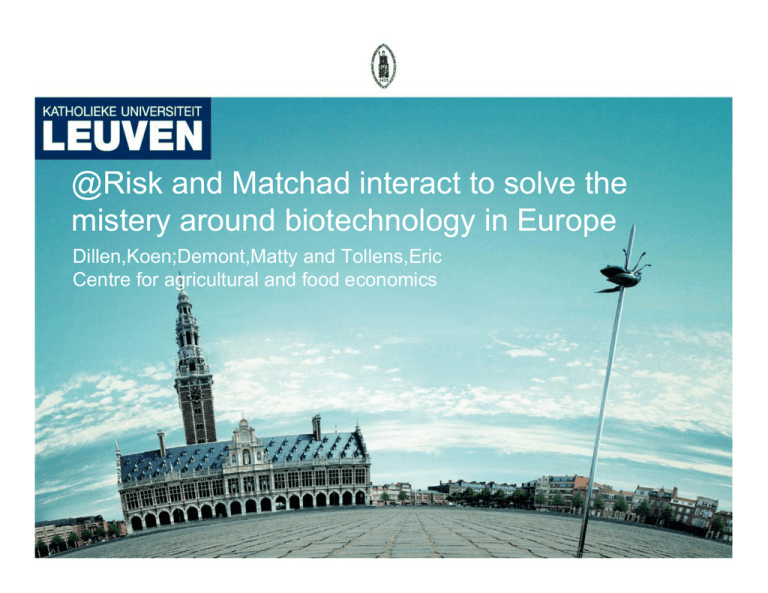
@Risk and Matchad interact to solve the mistery around biotechnology in Europe Dillen,Koen;Demont,Matty and Tollens,Eric Centre for agricultural and food economics http://www.biw.kuleuven.be/aee/clo/euwab.htm GM crops worldwide • • • • Introduced 1996 102 million hectares in 22 countries Bt corn, HT Soybeans, Bt cotton Opponents of biotechnology argue the distributional effects. The “life science sector” would extract most of the benefits and make farmers highly dependent. • Studies show increased income for developing countries Distribution among stakeholders • Study in Eurochoices (Forthcomming issue) shows rule of thumbs : – 2/3 to farmers, consumers,… – 1/3 to “life science sector” • Even in developing countries GM crops in Europe • Consumers seem unwilling to accept • Moratorium 1998-2004 • Now regulatory issues unclear and stringent, no big implementation • Spain continued to be the lead country in Europe planting 60,000 hectares in 2006. Importantly, the collective Bt maize area in the other five countries (France, Czech Republic, Portugal, Germany, and Slovakia) increased over fivefold from approximately 1,500 hectares in 2005 to approximately 8,500 hectares in 2006 Euwabsim • Asses the impact of the introduction of HT sugar beet worldwide. • Simulates the benefits foregone due to not accepting HT sugar beets, ex ante perspective. • Distribution between member states, producers, processors, consumers, input supplier and the government • 1996-2014, covering two sugar policies and there effect on innovation incentive • Worldwide stochastic equilibrium displacement model. Euwabsimv14 • Excel as a base module. • Two add-ons: – @Risk 4.5, Palisade cooperation – Mathcad 2001i, Mathsoft (now PTC) • Data from parameters (experts, literature, economic theory) stored in excel file • Send to Mathcad module, the mathematical module Euwabsimv14 • @Risk enables introducing prior distributions. The uncertainty module • @Risk enables introducing heterogeneity among producers Euwabsimv14 f(x) ρg μ θ Technology valuation heterogeneity • The distribution of technology valuation was found using the BestFit function on survey data (log logistic) • However, no survey for each member state • Expert opinions related to the survey through fixed percentile • Again used BestFit to construct log logistic on 3points Euwabsimv14 data from literature, experts, assumptions Values in 10^ -9 Distribution for Total / AGGR/I27 10.000 results 1.075 1.1625 1.25 Values in Billions 90% 1.0039 5% 1.1543 distribution sensitivity scenario analyses parameters Iterations (10.000) @Risk 4.5 Triang(0, 0.29, 0.58) 3.5 3.0 2.5 2.0 1.5 1.0 5.0% 0.0917 90.0% 0.4883 define distributions 0.6 0.5 0.4 0.3 0.2 0.1 0.0 0.0 0.5 -0.1 Mathcad 2001i 0.9875 5% Excel mathematical calculation of simulation model 9 8 7 6 5 4 3 2 1 0 0.9 Problems encountered • If one tries to link the Mathcad output cells to other cells and link these cells to @Risk, the latter does not wait for Mathcad to complete its calculation and collects the input of the previous iteration. • Incorrect correlation between inputs and outputs. Problems encountered • Solution: avoiding linking any cells to Mathcad output cells. • Procedure: clear all mathcad output cells and add fresh @Risk output links to the cells • After each simulation, the output links have to be assigned again because Matchad overwrote them. Problem still to be solved • The report made in Excel does not show the real value. Every time we have to close @Risk results window and reopen to get the correct estimates • Sensitivity analysis can not be reported through a comment. We have to copy the sensitivity window to Excel after each simulation Recomendation • Sensitivity analysis can not be reported through a comment. We have to copy the sensitivity window to Excel after each simulation Results • Total welfare €15.8 billion (NPV) worldwide • European farmers €4.8 billion • Life science: €6.1 billion (revenue) • Sharing out: – 30% EU farmers – 31% ROW producers and consumers – 39% Life science sector
